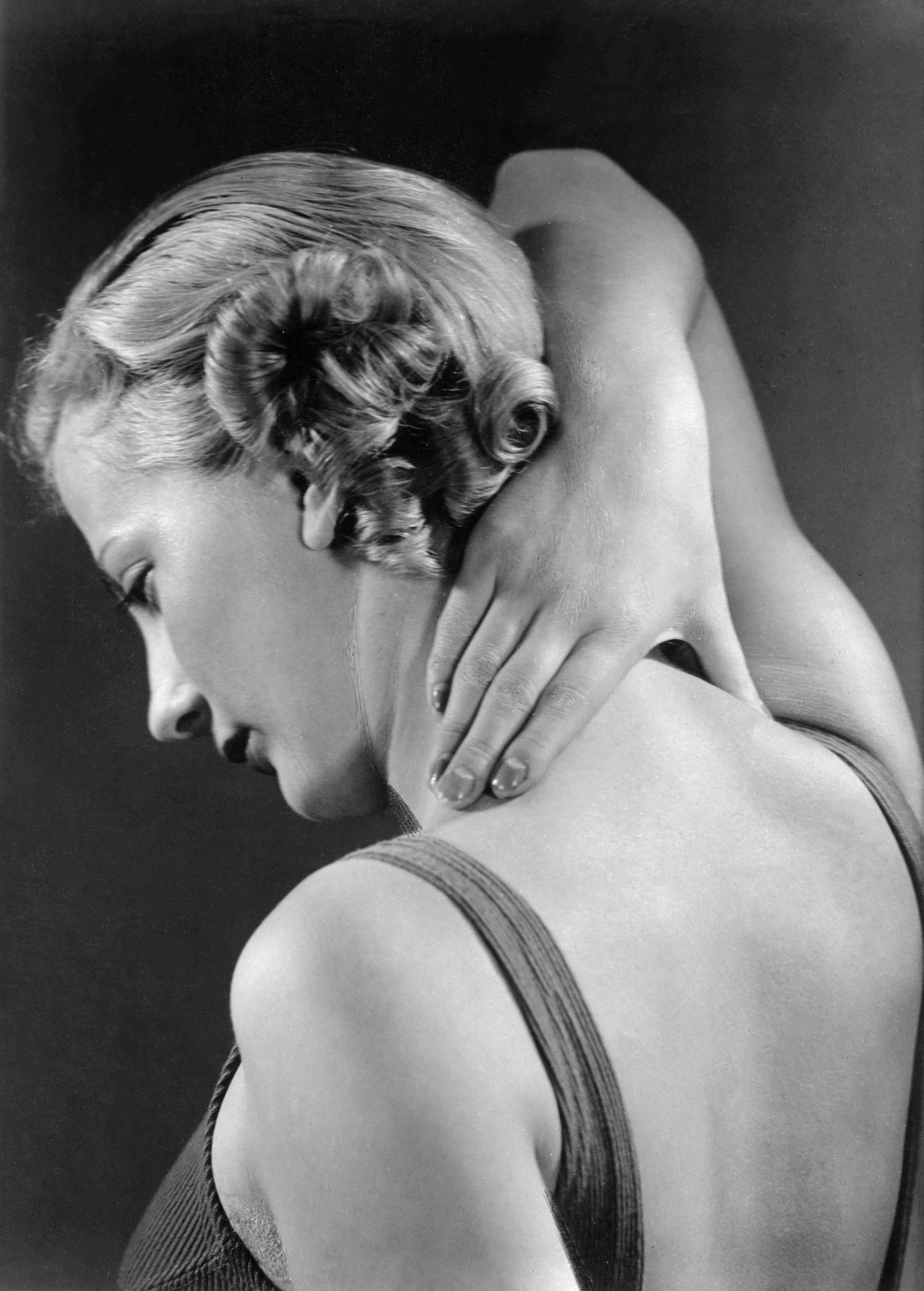Jennifer Hollander, one of Los Angeles’ most sought-after clinical and dermal nurse practitioners, shares tips that will change the way you treat your skin forever.
When it comes to current-day beauty standards, a push toward individualism is slowly eroding. Why, in 2022, does everyone look like they’re going to the same doctor? We at W support any person expressing themselves in ways that make them happy, but pushing unfair beauty standards that solidify one singular face with pumped-up cheekbones, duck lips, and a chiseled Michael Douglas filler jawline as the cultural norm is problematic. What’s wrong with a face that is not symmetrical? Society can celebrate being actually unique.
Enter Jennifer Hollander, the sought-after Los Angeles nurse practitioner who specializes in clinical and cosmetic dermatology. I’ve been keen on her Instagram videos—which my sister sends me at 3 AM all the way from London—especially a meme she posted about what the cast of Friends would look like, present-day: yassified. They’d be relatively inconspicuous if they plopped on a couch at Hype House.
Hollander, who runs the non-surgical and noninvasive skincare division of plastic surgeon Dr. Ben Talei, recognizes the problems associated with constantly scrolling social media. She speaks out about it often, and enjoys a loyal, high-caliber following in Los Angeles (and across the country, for that matter) because she knows how to make someone’s skin and features look like them. Here, Hollander delivers some much-appreciated beauty guidance—imparting her knowledge through tips we can actually absorb in the long-term.
Ditch Your Moisturizer (Seriously).
“It will take three to six weeks for you to get used to it, but I promise you will be happy,” Hollander says. “Moisturizers are not great for anyone’s skin unless there’s an underlying skin condition preventing their body from naturally producing the hydration their skin needs, in the case of patients who suffer from eczema or psoriasis. Your skin can produce the necessary oils—moisturizer can actually cause the skin to look dull and dry over time. All things being normal, moisturizers should be left out of any skincare program, especially those with acne and or rosacea. Why, you ask? Because that oil is the underlying cause of acne, not just hormones. The trouble with moisturizers is that they inhibit the body’s own production of oils thereby causing a cycle of the skin looking dull and feel very dry requiring the moisturizer to feel hydrated and look good again.”
“Moisturizer also does nothing for antiaging. That is why I always recommend swapping out your moisturizer with a serum. During the day, at the very least, your sunscreen should be your moisturizer. You can always add in a hyaluronic acid serum, a vitamin C serum—some type of growth factor or peptide to your AM routine prior to your sunscreen, as it should always go on last. For the PM, I would swap out your heavy, rich cream, with another type—or just the same antiaging peptide or growth factor. I hear a lot of patients telling me how dry they feel once they have started this new regime, and my answer, often, is your skin is weak. Like anything else, it’s going to take time to adjust and bring your skin back to homeostasis. I tell my patients their skin will feel different, dry, and tight—and that they will be tempted to use their moisturizer. I can’t tell you how many patients are in awe by how different their skin looks after ditching their moisturizer, especially when it comes to acne- and rosacea-prone patients. If you are experiencing severe dryness from weather condition or something very much outside of your control, using a gentle water-based moisturizer isn’t going to hurt you. The idea is to use it episodically, rather than daily.”
https://www.instagram.com/p/CWoZmQ_Bn7f/
The Truth About Acne Scarring
“Despite the myriad ways of treating acne, you can only improve the treatments by 35-40 percent, at best,” Hollander says. “There are varying degrees of acne scarring, and there are lots of misconceptions to be cleared up about how to treat them. There are three main types of scars: icepick, rolling, and boxcar. As far as lasers go, fully ablative Erbium and CO2 lasers are best used for acne scarring. For scars that are more superficial, check out superficial resurfacing laser treatments and micro needling (not to be mistaken with RF [Radiofrequency] micro needling). Deep scars are ideally raised prior to resurfacing. The idea is to get under the scar and therefore I often recommend a series of subcission treatments, where the tissue is being undermined and scar tissue is broken up by a large bore needle or cannula.”
“There is a misinterpretation that microneedling, BBL/IPL, or superficial resurfacing treatments like Clear and Brilliant or even Fraxel will get rid of acne scarring. These treatments treat too superficially and won’t really help. In some cases, the scars are so deep (also known as atrophic scars), that they require fat transfer or filler to raise them. We use in our office targeted TCA acid treatments to address some of the deeper boxcar and icepick scars. Other manual methods of reversing acne scaring are punch excision and removal of the scars.”
Hey, Gen Z: Lay off the Botox—Why Treating Younger Skin Can Be Detrimental
“As beauty trends continue to change, a wider and younger demographic of patients are making their way into the clinic seeking services for “prevention.” This is absurd,” Hollander explains. “Doing treatments too early on can be more harmful than helpful. The caveat here is you’re causing more damage to a young, healthy face than prevention. The action of stimulating new collagen and new skin proteins lies in damaging the tissue first and inciting an inflammatory process—which is, although controlled, still damaging. If we are dealing with compromised tissue, mature skin, it would make sense to risk the compromised tissue for new skin.”
“The bottom line is, prevention for someone in their late teens and early 20s is a solid skincare program consisting of a vitamin C serum, sunscreen, and perhaps a good eye cream and retinol. Prevention lies in sleep, exercise, lots of water, exfoliation, sun avoidance, and not smoking cigarettes and moderating your alcohol consumption. If you’re going to party, you’re going to pay for it on your face.”
How to Properly Deal With Under-Eye Wrinkles
“The eyes tend to be the first thing that people see as they age. If you’re over the age of 25, please put down the powder—or, at least, keep it as far away from your eyelids as possible. This is also true for paste-like concealers. The easiest at-home way to minimize the appearance of under-eye wrinkles is to aim for a more liquid consistency. You can also try to cut a thicker concealer with eye cream. Both powder and thick concealers will accentuate lines that don’t exist. Using a powder brush to dust over and minimize sheen on the face is fine—but consider reaching for a good eye serum that you use on the upper and lower eyelids, and then apply a tinted SPF (I like Laura Mercier oil-free tinted SPF) or lightweight foundation to the face. Then apply a conservative amount of eye concealer (YSL Touche Éclat is a favorite of mine) to affected areas.”
“For those who are concerned about tissue laxity or under-eye wrinkles, I recommend a deep TCA chemical peel that we perform in-office. It carries about a week of downtime, but the results are impressive. That, combined with microtox (droplet half-units of Botox) along the crow’s feet is a very popular combination to keep the eyes looking light and bright.”
The Difference Between Medical Grade vs. Over-the-Counter Skincare
“Think of shopping for skincare like buying a bottle of Champagne,” Hollander says. “You have the cheap stuff, the expensive stuff, and the very very expensive stuff. The best way to delineate the good stuff from the great stuff is over the counter vs. medical grade. Don’t believe anyone who sells you collagen in a jar—that’s not how it works. Effective skincare products aim to reproduce collagen along with other skin proteins by using peptides, the building blocks of skin proteins, and growth factor, which are chemical mediators that tell your body to make new skin. Other actives include retinoids and chemical exfoliants like AHAs and BHAs. Most medical-grade skincare products are found at doctor’s offices. What makes it medical grade? A higher concentration of active ingredients, which equates to better-looking skin. In addition to having a higher content of the active ingredient, medical-grade skincare products have the purest form of that ingredient. Before you’re able to purchase these medical-grade products, you should be evaluated during your consultation to assess which products, in what order and combination, would be best-suited for your skin type. In a medical environment, these active skincare products are often paired with non-invasive services like lasers, peels, and skin brightening.”
No, You Cannot Shrink Your Pores
“But you can make them look smaller,” Hollander explains. “Our pore size is genetically predetermined, but we can do some things to make them look smaller. And for those of you who are picking to try and get rid of them, please stop—they are part of your anatomy. Our pores are very important, as they house our sebaceous, or oil, glands. By limiting or completely ditching topical moisturizers and facial oils, you will notice a significant improvement in pore size. Adding retinol or Retin-A to your regimen will help decrease the output of oil production, thereby decreasing the appearance of pore size. Tretinoin is a powerhouse antiaging cream that opens the cell walls and allows the oil to escape. You will see the benefits of an increase in cell turnover, fewer lines, and improved texture.”
The Scary Side of Lasers
“Lasers can be wonderful tools,” Hollander tells W. “However, they can be very dangerous, especially on darker skin tones, if certain precautions aren’t taken. The more concentration of melanin you have in your skin, the more likely you are to produce pigment under certain conditions. Things that tend to trigger pigment-producing cells are heat, injury, and the sun. Therefore, it is so important to suppress pigment-producing cells prior to exposure to these triggers and manage the skin post-treatment. Unless a patient looks like Nicole Kidman—essentially, very, very fair—I will always prep the skin with actives like Retin-A for a minimum of two weeks prior to the procedure to prevent post-inflammatory hyperpigmentation, which can be very difficult to get rid of, not to mention devastating for the patient. This is especially true for deep resurfacing treatments like Erbium, CO2 lasers, or deep chemical peels like Blue Peels. Prepare to stay out of the sun for several days to weeks (depending on the treatment) after your procedure to prevent PIH. This is especially risky with Asian skin, which is highly, highly, prone to PIH. The take-home message is—and this is especially true for darker skin types—don’t get a laser treatment or anything invasive from someone who does not understand this or who does not know how to treat skin of color.”
The One Skincare Ingredient You Can’t Live Without
“Retin-A. This powerhouse topical cream not only helps those who suffer from acne, but it improves texture, minimizes fine lines relatively quickly, decreases oil production, and thereby decreases pore size. It can also reduce the appearance of acne scarring by increasing cell turnover. Most people who have used Retin-A experience side effects that made them stop using this holy grail of a cream. Side effects are usually a result of overuse or too much in the amount—or both. I make sure to educate my patients on how to use this topical prescription medication to ensure compliance, which increases better outcomes once patients know how to ‘do the dance’ with it.”
Source: Read Full Article



